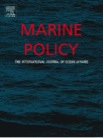A new paper by the Environmental Information: Use and Influence research initiative (EIUI) has been published in Marine Policy:
Soomai, S. S., MacDonald, B. H., & Wells, P. G. (2013). Communicating environmental information to the stakeholders in coastal and marine policy-making: Case studies from Nova Scotia and the Gulf of Maine/Bay of Fundy region. Marine Policy, 40, 176–186. http://dx.doi.org/10.1016/j.marpol.2013.01.017
This paper presents the results of two case studies that examined the awareness of, use by, and influence on stakeholders in coastal and marine policy-making in Eastern Canada and the United States of environmental publications produced by government agencies. Studying the use and influence of such publications assures accountability of the allocation of public funds as well as advancing understanding of environmental protection  ssues. In 2010, the EIUI research team concluded a study in collaboration with the Government of Nova Scotia that assessed the initial use and influence of The 2009 State of Nova Scotia’s Coast Report, released in December 2009. Then in 2011, the EIUI research team, in partnership with Fisheries and Oceans Canada, completed a study to determine the awareness and use of The State of the Gulf of Maine Report, which was released by the Gulf of Maine Council on the Marine Environment (GOMC) in June 2010 in the form of a context paper and five environmental theme papers. Interviews and surveys, web analytics, media scans, and citation analysis were conducted shortly after public release of the two reports. In these case studies the views of multiple stakeholders were analyzed, including policy and decision makers, scientists, industry, and the public.
ssues. In 2010, the EIUI research team concluded a study in collaboration with the Government of Nova Scotia that assessed the initial use and influence of The 2009 State of Nova Scotia’s Coast Report, released in December 2009. Then in 2011, the EIUI research team, in partnership with Fisheries and Oceans Canada, completed a study to determine the awareness and use of The State of the Gulf of Maine Report, which was released by the Gulf of Maine Council on the Marine Environment (GOMC) in June 2010 in the form of a context paper and five environmental theme papers. Interviews and surveys, web analytics, media scans, and citation analysis were conducted shortly after public release of the two reports. In these case studies the views of multiple stakeholders were analyzed, including policy and decision makers, scientists, industry, and the public.
While produced for different audiences and in different formats, the two reports are important sources of baseline information on regional coastal issues. The methods used to promote awareness of the reports primarily reached the ‘‘interested public,’’ which included individuals and groups who usually respond to government requests for input, who may be better able to inform policy, and who are already active in coastal zone conservation. In both initiatives, raising awareness and use of information was challenged by the need to communicate environmental information to diverse audiences and to engage the general public (stakeholders and individuals outside of established networks). The results of the case studies are presented within the context of communication and information pathways at the ‘‘science-policy interface.’’
A copy of the paper is available at http://dx.doi.org/10.1016/j.marpol.2013.01.017.